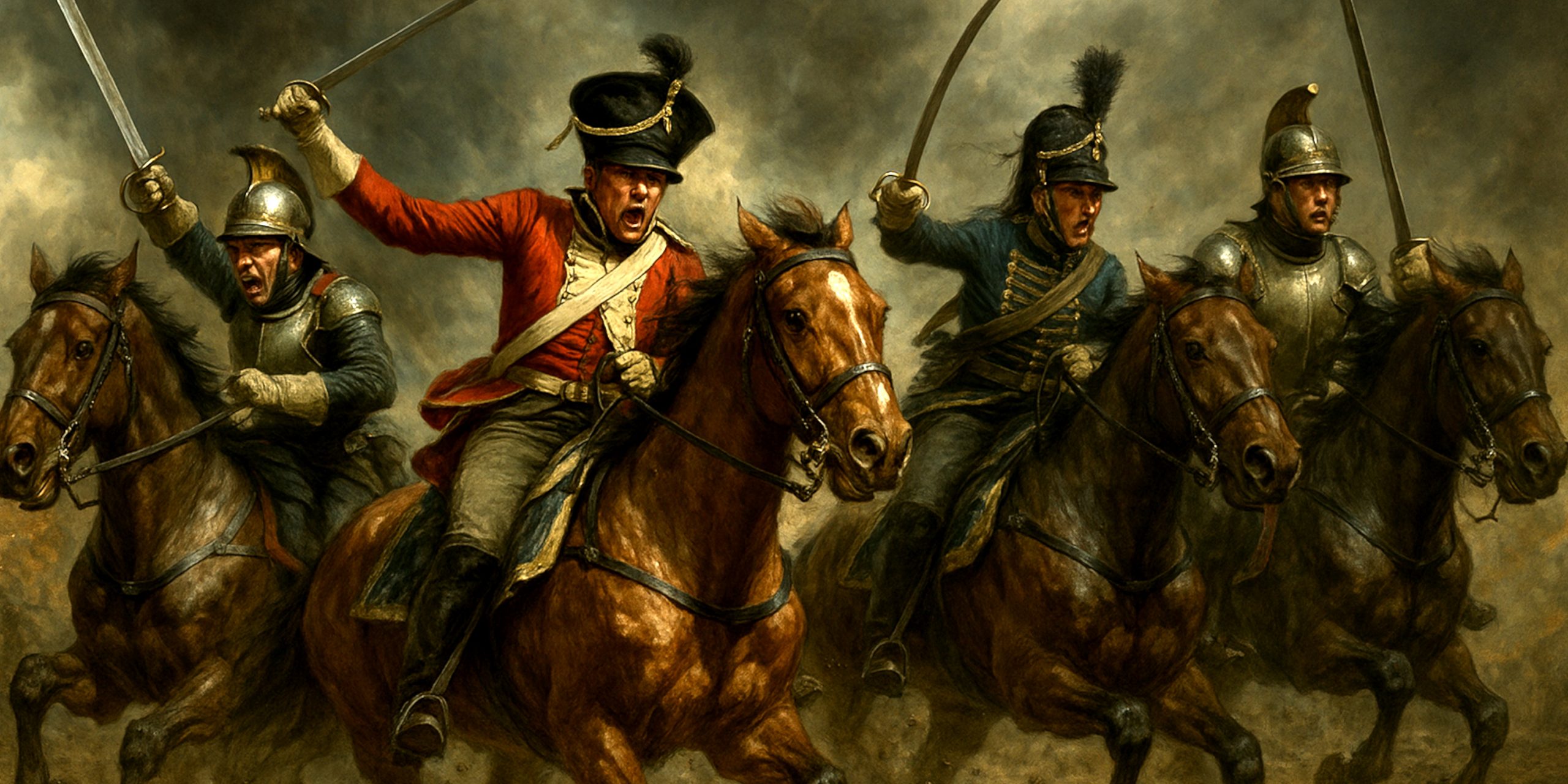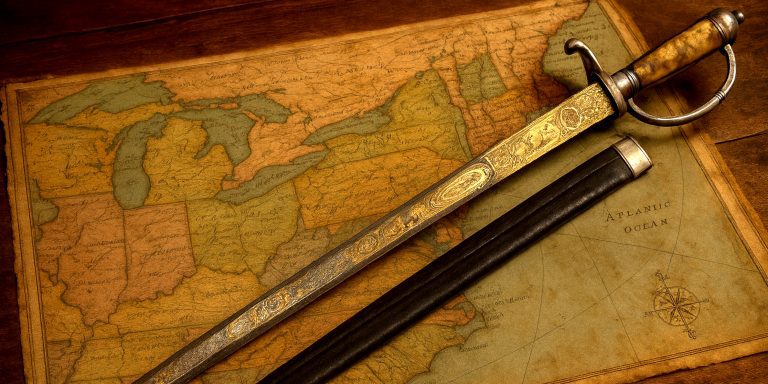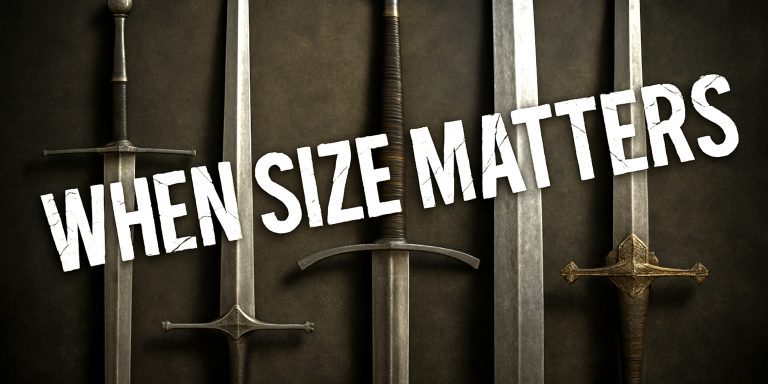
A historian’s ranked guide to the mounted forces that shaped an era
Napoleonic cavalry were far more than the dramatic charges shown in paintings. They scouted, screened, broke formations, tore apart retreating armies and occasionally died in spectacular heaps against disciplined infantry squares. Their value depended on discipline, horse quality, weapon handling and the ability to act at the precise moment when the battlefield tilted.
This tier list ranks the mounted units who actually shaped campaigns, grounded in historical performance rather than romantic myth.
S Tier: The Masters of Shock, Speed and Precision
These are the cavalry units that consistently tilted battles. They combined discipline, aggression and weapons suited to their style.
French Cuirassiers
Weapons: AN XI heavy cavalry sabre, straight thrusting sword, flintlock pistol, carbine
Key battles: Eylau, Wagram, Borodino, Leipzig, Waterloo
These armoured giants rode straight into musketry with terrifying confidence. Their steel cuirasses turned glancing shots, and their heavy sabres smashed through shaky formations. When cuirassiers struck an exposed line, the result was chaos.
French Carabiniers
Weapons: AN XI heavy cavalry sword, straight thrusting sabre, flintlock pistol, carbine
Key battles: Marengo, Wagram, Borodino, Hanau
Tall men on powerful horses, later fitted with brilliant white cuirasses that gleamed across the field. Their charges delivered enormous psychological pressure before blades even met flesh. Slow to commit, devastating when unleashed.
British Heavy Cavalry (Union and Household Brigades)
Weapons: 1796 heavy cavalry sword, carbine, pistol
Key battles: Salamanca, Vittoria, Waterloo
Brutal shock cavalry armed with a sword that behaved more like a cleaver than a gentleman’s weapon. Their attack at Salamanca remains one of the finest timed cavalry actions of the era. Their weakness was over-pursuit rather than lack of force.
Hungarian Hussars
Weapons: Szabla sabre, carbine, pistols
Key battles: Raab, Leipzig, numerous pursuit and raiding actions
Perfect light cavalry. Their riding skill, speed and precision sabre strokes made them superb scouts, flankers and pursuit specialists. When the battlefield turned fluid, hussars thrived.
Russian Cuirassiers
Weapons: Heavy straight cavalry sword, cuirassier sabre, pistols
Key battles: Austerlitz, Borodino, Leipzig
Hard hitting and stubborn under fire. Less polished than their French counterparts but capable of extraordinary determination. Their charges at Borodino showed a grim resolve that impressed even their enemies.
A Tier: Elite, Fearless and Consistently Effective
Strong units with high combat value who occasionally matched S tier performance.
French Hussars
Weapons: AN IX light cavalry sabre, pistols, carbine
Key battles: Austerlitz, Jena, Wagram, Peninsular raids
Flamboyant, skilled and unpredictable. Their sabre work was fast and elegant, and they excelled at reconnaissance and surprise strikes.
British Light Dragoons
Weapons: 1796 light cavalry sabre, carbine, pistol
Key battles: Talavera, Busaco, Waterloo
Aggressive and quick. The 1796 sabre turned them into vicious light shock troops capable of slicing through lighter cavalry with brutal sweeps.
Polish Lancers (Uhlans)
Weapons: Lance, Polish szabla sabre, pistol
Key battles: Somo Sierra, Borodino, Leipzig
Lancer specialists without equal. The Somo Sierra charge remains one of the most audacious actions of the Napoleonic Wars. Their combination of lance and curved sabre made them lethal both at range and in close.
French Chasseurs à Cheval
Weapons: Light cavalry sabre, carbine
Key battles: Austerlitz, Eylau, Wagram
Reliable cavalry who screened advances, guarded flanks and exploited breaks in enemy lines. Not flashy, but consistently effective.
Russian Dragoons
Weapons: Dragoon straight sword, carbine, pistols
Key battles: Austerlitz, Eylau, Borodino
Versatile troops who fought both mounted and dismounted. Their sword strokes were heavy and deliberate, and they held position under fire better than many light cavalry.
B Tier: Reliable, Brave and Often Underrated
Solid mounted troops who could influence a battle but lacked the refinement or consistency of the top tiers.
Austrian Uhlans
Weapons: Lance, straight cavalry sword, carbine
Key battles: Aspern Essling, Wagram, Leipzig
Effective lancer regiments, though not as brilliantly drilled as the Poles. Good at pursuing beaten troops and breaking unsteady infantry.
French Dragoons
Weapons: Dragoon straight sabre, carbine, pistols
Key battles: Marengo, Austerlitz, Wagram
The Swiss Army knife of Napoleonic cavalry. Useful in many roles, rarely decisive on their own.
British Hussars
Weapons: 1796 light cavalry sabre, pistols, carbine
Key battles: Vittoria, Salamanca, Waterloo
Evolved from fashionable show troops into highly competent battlefield performers. Their sabre cuts were notoriously destructive.
Prussian Hussars
Weapons: Light sabre, pistols, carbine
Key battles: Leipzig, Ligny, Waterloo
Solid raiders and scouts, though lacking the precision of Hungarian hussars or the aggression of the British.
Bavarian Chevaulegers
Weapons: Sabre, carbine, lances in some regiments
Key battles: Wagram, Hanau
Dependable medium cavalry who did exactly what was asked of them. Good riders with respectable discipline.
C Tier: Brave but Inconsistent
Units that had moments of real promise but lacked cohesion or consistent leadership.
Dutch-Belgian Cavalry
Weapons: 1796 light cavalry sabre, carbine, pistols
Key battles: Quatre Bras, Waterloo
Courage was present, structure less so. Their charges could be impressive but often fell apart under counterattack.
Italian Royal Guard Cavalry
Weapons: Straight cavalry sword, pistols, carbine
Key battles: Wagram, Leipzig
Well-presented and occasionally effective, but never decisive. Good equipment could not always compensate for middling leadership.
Saxon Chevaulegers
Weapons: Light cavalry sabre, carbine
Key battles: Jena, Leipzig
Capable but overshadowed. Rarely had the freedom or command support to influence major actions.
Portuguese Cavalry
Weapons: British-supplied sabres, carbines, pistols
Key battles: Busaco, Albuera
Improved over time but usually outclassed by French, British and Polish light cavalry.
Neapolitan Guard Cavalry
Weapons: Straight sabre, pistols, carbine
Key battles: Tolentino, Leipzig
Better than line cavalry but still inconsistent. Capable of brief brilliance, prone to sudden collapse.
D Tier: The Overmatched and the Unreliable
Units that struggled consistently, usually through no fault of the troopers themselves.
Spanish Regular Cavalry (Early War)
Weapons: Straight cavalry sword, pistols, carbine
Key battles: Uclés, Tudela
Courage without coordination. Their charges were enthusiastic but rarely coherent enough to survive contact with disciplined French cavalry.
Westphalian Cavalry
Weapons: French-style straight sabres, carbines
Key battles: Wagram, Leipzig
Low morale and weak leadership undermined decent equipment. Crumbled under pressure in multiple campaigns.
Hanoverian Militia Horse
Weapons: Mixed light sabres, carbines
Key battles: Small Peninsular actions
Not true battlefield cavalry. Suitable for patrol work, poorly suited to combat against trained French or British units.
Neapolitan Line Cavalry
Weapons: Short straight sabres, pistols, carbines
Key battles: Raab, Leipzig
Undertrained and badly mounted. Breakdowns in formation were common and often catastrophic.
Italian Provincial Militia Cavalry
Weapons: Basic sabres, old pistols, carbines
Key battles: Local defensive actions
These were cavalry in name only. Poor riding, weak equipment and limited training left them hopeless against professional forces.
The Seven Swords Takeaway
Napoleonic cavalry succeeded not only because of their weapons but because of their ability to act precisely at the moment the battlefield flickered between order and collapse. The top tiers earned their place through discipline, timing and cold-blooded aggression. The weakest units never managed to align courage with capability.



